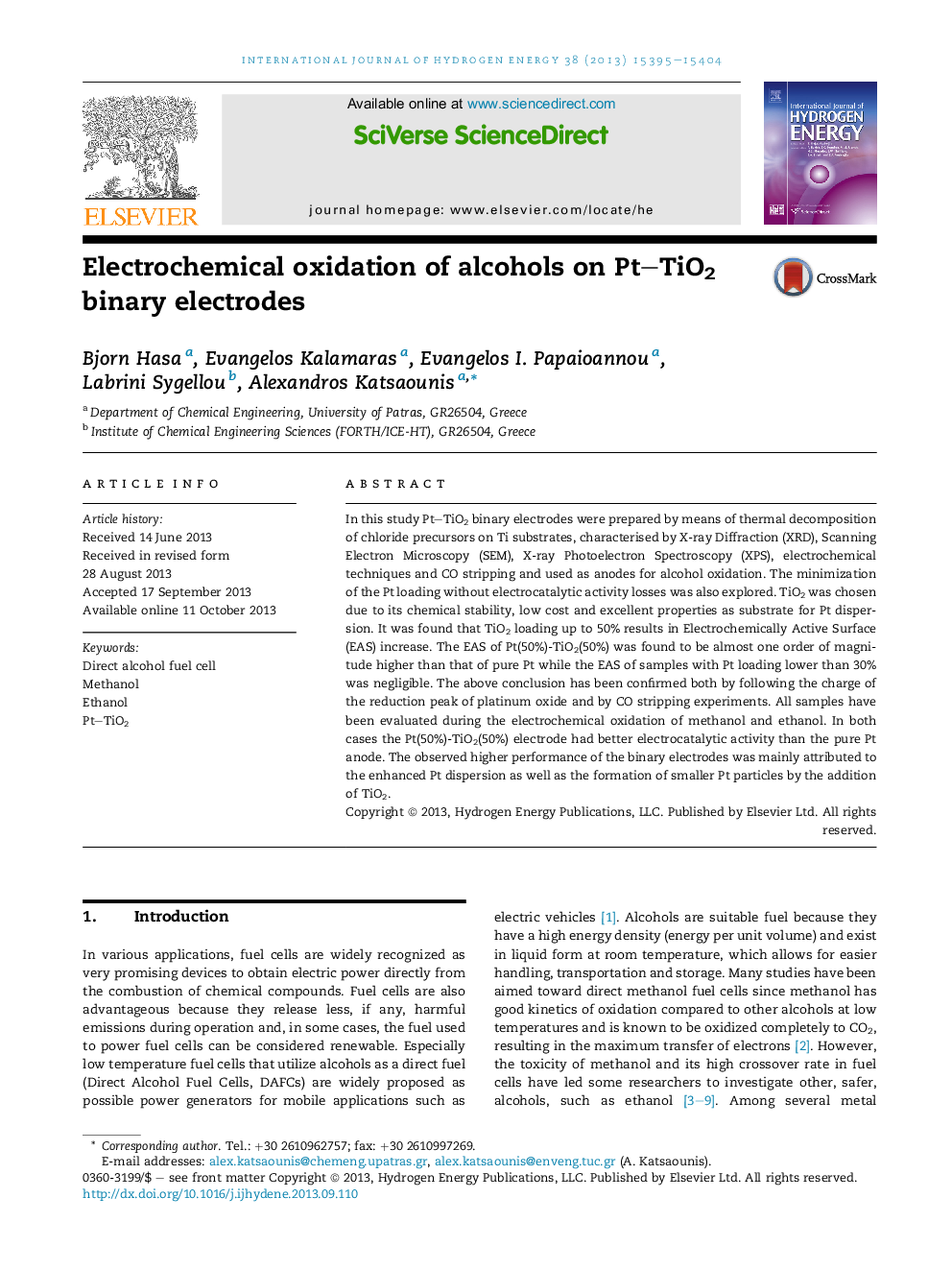| Article ID | Journal | Published Year | Pages | File Type |
|---|---|---|---|---|
| 7721259 | International Journal of Hydrogen Energy | 2013 | 10 Pages |
Abstract
In this study Pt-TiO2 binary electrodes were prepared by means of thermal decomposition of chloride precursors on Ti substrates, characterised by X-ray Diffraction (XRD), Scanning Electron Microscopy (SEM), X-ray Photoelectron Spectroscopy (XPS), electrochemical techniques and CO stripping and used as anodes for alcohol oxidation. The minimization of the Pt loading without electrocatalytic activity losses was also explored. TiO2 was chosen due to its chemical stability, low cost and excellent properties as substrate for Pt dispersion. It was found that TiO2 loading up to 50% results in Electrochemically Active Surface (EAS) increase. The EAS of Pt(50%)-TiO2(50%) was found to be almost one order of magnitude higher than that of pure Pt while the EAS of samples with Pt loading lower than 30% was negligible. The above conclusion has been confirmed both by following the charge of the reduction peak of platinum oxide and by CO stripping experiments. All samples have been evaluated during the electrochemical oxidation of methanol and ethanol. In both cases the Pt(50%)-TiO2(50%) electrode had better electrocatalytic activity than the pure Pt anode. The observed higher performance of the binary electrodes was mainly attributed to the enhanced Pt dispersion as well as the formation of smaller Pt particles by the addition of TiO2.
Related Topics
Physical Sciences and Engineering
Chemistry
Electrochemistry
Authors
Bjorn Hasa, Evangelos Kalamaras, Evangelos I. Papaioannou, Labrini Sygellou, Alexandros Katsaounis,
